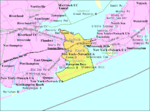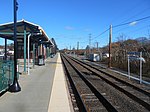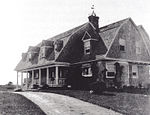Shinnecock Light
Lighthouses completed in 1858Lighthouses in Suffolk County, New YorkUnited States lighthouse stubs

Shinnecock Light was a lighthouse on the south side of Long Island, New York. The name comes from the Shinnecock Indian Nation.The original red brick tower was built in 1858. It was 168 feet (51 m) tall and had a 1st order Fresnel lens, itself almost 12 feet (3.7 m) tall. If it were still standing it would be one of the ten tallest lighthouses in the US. It was discontinued in 1931 in favor of a skeleton tower and demolished by the Coast Guard in 1948. Some time later the Coast Guard built a communication tower on the site and moved the light to the height of 75 feet (23 m) on that tower.
Excerpt from the Wikipedia article Shinnecock Light (License: CC BY-SA 3.0, Authors, Images).Shinnecock Light
Lighthouse Road,
Geographical coordinates (GPS) Address Nearby Places Show on map
Geographical coordinates (GPS)
| Latitude | Longitude |
|---|---|
| N 40.850555555556 ° | E -72.504166666667 ° |
Address
U.S. Coast Guard
Lighthouse Road 29
11946
New York, United States
Open on Google Maps






